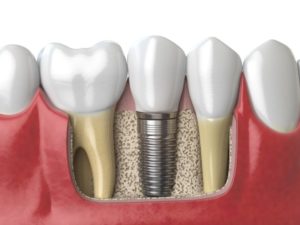Everything You Need to Know About Bone Grafts for Dental Implants
July 8, 2021

Dental implants are a revolutionary tooth loss solution because they’re the only option to replace missing teeth both above and below the gumline. As long as you have good oral health and adequate jawbone density, this state-of-the-art treatment can help you replace any number of missing teeth! However, you may need to get a bone graft before rebuilding your smile with dental implants. This preliminary procedure can make all the difference in how successful your tooth replacement is. Read on to learn more about why you may need a bone graft before getting dental implants in Bethel Park.
What Do Bone Grafts Have to Do With Dental Implants?
First, lets look at what a dental implant is. A dental implant is a small titanium post that can be inserted directly into the jawbone to replace the roots of a missing tooth. Once in place, it gradually fuses with the surrounding bone tissue and forms a strong foundation for the restoration it supports. However, if there isn’t enough mass in your jawbone, there won’t be enough tissue for the implant to integrate with, making it much more likely to fail or fall out.
This is a relatively common problem for patients facing tooth loss, since the jawbone begins to deteriorate as soon as a tooth goes missing. In fact, some recent studies suggest that as many as 50% of dental implant patients need a bone graft for dental implants. A bone graft can help strengthen specific areas of your jaw so that a dental implant can be placed successfully.
Top Reasons You May Need a Bone Graft for Dental Implants
Essentially, a bone graft is needed when there isn’t enough jawbone density to support a dental implant. The most common culprits behind a weakened jaw include:
- Prolonged tooth loss, because the jaw begins to shrink away without circulation from the roots of the missing tooth/teeth.
- Gum disease, since advanced gum disease is known to damage and destroy the connective tissues that help hold natural teeth and dental implants in place.
- Trauma to the jaw, such as an accident or an injury, can weaken the jawbone.
How Do Bone Grafts Work?
As we mentioned, even if you are not initially a good candidate for dental implants because of low jawbone density, a bone graft may be able to help. This relatively straightforward procedure involves a minor surgery in which the weakened area of your jaw is accessed and grafting material is placed in the area. This material is either bone tissue taken from elsewhere in the patient’s body or from a donor. Once in place, the healthy graft material encourages the growth of more bone tissue, gradually building up the jawbone until you’re ready to have your dental implant(s) placed.
After getting a bone graft, you can expect to wait 4-6 months before you’re ready to have dental implants placed. While this may add more time, money, and effort to your treatment, you can feel confident knowing that you’re maximizing your chances for successful dental implants. With the help of a bone graft, you can expect to enjoy a new smile that looks, feels, and functions just like natural for the rest of your life!
About the Practice
Dr. Robert J. LoCastro, DMD (or just “Bob” as he’s affectionately referred to by his patients) has been practicing dentistry for decades and continues to regularly complete continuing education in advanced procedures. As a periodontist, he has specialized training in gum health and the placement, maintenance, and repair of dental implants. If you are interested in dental implants or wonder if you need a bone graft beforehand, he would be thrilled to talk with you for a consultation. You can schedule yours today online or at (412) 833-6377.
No Comments
No comments yet.
RSS feed for comments on this post.
Sorry, the comment form is closed at this time.
